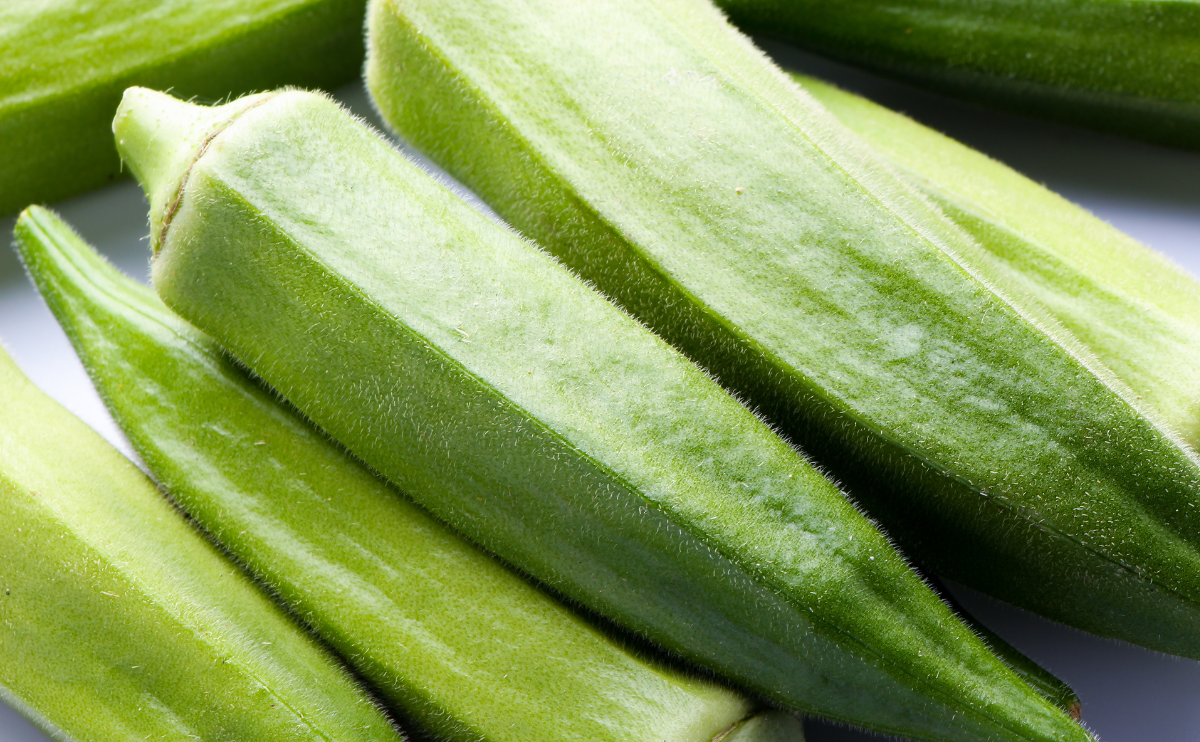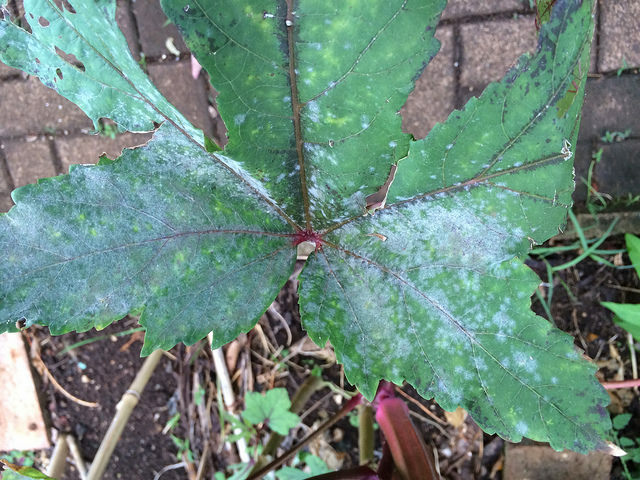Okra (Abelmoschus esculentus) is a flowering plant that is grown as an annual in most regions, though the species is a perennial plant in the dry tropical regions where it is native. Okra is sometimes used as a landscape plant for its attractive flowers. However, it is usually grown as a vegetable crop for its edible seed pods that appear after the flowers bloom. These seed pods have a variety of cooking uses; they are especially useful for thickening stews because of their gummy mucilage.
The okra plant has an upright, branching growth habit; the palmate leaves have five to seven lobes, and the flowers are yellow or white, often with purplish centers. The flowers give way to elongated seed pods, up to 7 inches long, containing white seeds that fill a pentagon-shaped chambered structure.
Okra is generally planted in the spring from seeds sown directly into the garden when the soil reaches 65 to 70 degrees Fahrenheit. The plants grow quickly and will take close to two months to produce seed pods that can be harvested. In regions with short growing seasons, the seeds can be started indoors in biodegradable pots three to four weeks before the last projected frost date. Okra plants do not like their roots disturbed.

| Botanical Name | Abelmoschus esculentus |
| Common Names | Okra, gumbo, lady’s finger |
| Plant Type | Annual, vegetable |
| Mature Size | 6-8 ft. tall, 3 ft. and wide |
| Sun Exposure | Full sun |
| Soil Type | Moist, fertile, well-drained |
| Soil pH | Acidic (6.0 to 6.8) |
| Bloom Time | Seasonal |
| Flower Color | Yellow, white |
| Hardiness Zones | 2–11 (USDA) |
| Native Area | Africa, Asia |

When to Plant?
This will be determined by your planting zone. There is a final frost date for each area. As a result, you can plan your gardening activities around this date. Check our Frost Dates Across North America: First & Last Frost Dates Chart. However, the date will not be the same for every plant.
How to Plant
Plant okra seed in the garden at least three weeks after the last frost when the soil temperature warms to 60 degrees and above. Craig R. Anderson at the University of Arkansas Division of Agriculture, who suggests you plant okra seed 10 days after setting out tomato transplants, cautions that because plants aren’t encouraged to bloom until sunlight exposure is less than 11 hours, it’s possible that seed started too late in the spring may remain vegetative all summer until fall and its earlier sunsets arrive.

Give okra plenty of room. The plants often grow four to six feet tall and can spread just as far. Plant seed so that plants will be spaced 12 to 15 inches apart in rows at least three feet apart.
Okra seed can be difficult to germinate, so soak the seed overnight to encourage germination, which takes place after a week or more. You can plant seed sooner in the season and encourage faster germination by covering rows with black plastic. This also encourages faster early growth.
It’s possible to get a jump on the okra season by starting seed indoors four weeks or so ahead of transplanting in the garden. Okra roots are very delicate, so don’t allow starts to get root bound in their pots, and be especially careful when relocating them into the ground. Pots that are transplanted right into the garden with its start can be helpful.
How to Cultivate
Despite its reputation as a plant that will survive dry conditions (see “four-foot roots” above), okra is hardier and produces more pods with adequate watering. An inch of water a week is optimum. Plants that grow on little water will produce tough pods and may be prone to afternoon wilt.
If soil is well conditioned, okra will need only light side dressings of compost during the season for best results. Foliar sprays are particularly effective. Liquid seaweed sprays can be applied two or three times during the season.
Okra is also sensitive to weeds. Keep your patch well-weeded, especially when plants are young.
How to Harvest
Okra blossoms can start appearing in seven or so weeks when conditions are good. The blossoms are there for only a day — here’s hoping you have a lot of natural pollinators at work — and the pods are visible soon after. The sooner they’re picked, the better, though well-cared-for plants will keep their pods tender for five days or more. Larger varieties retain their tenderness until they reach the full size, which can be as much as six inches or more.
Hydroponics
Germination: Start by soaking okra seeds in water for about 24 hours before planting them in a seedling tray or starter plugs. Keep the tray or plugs moist and in a warm place with good light until the seeds sprout.
pH range: The ideal pH range for okra hydroponic systems is between 5.5 and 6.5. You can use a pH meter to regularly monitor the pH level and adjust it as needed using pH up or pH down solutions.
EC: The recommended EC range for okra hydroponics is between 1.6 and 2.4 mS/cm. This can also be monitored with an EC meter and adjusted by adding more or less nutrients to the water.
PPM: The ideal PPM range for okra hydroponics is between 800 and 1500 ppm. This can be adjusted by adding more or less nutrients to the water.
Humidity: Okra plants prefer a relative humidity of between 60 and 80 percent. You can use a hygrometer to measure the humidity levels and adjust it by adding a humidifier or dehumidifier as needed.
Light hours: Okra plants need at least 8 hours of direct sunlight or 12-16 hours of artificial light per day to thrive. You can use grow lights to supplement natural sunlight if needed.
Temperature air: Okra plants prefer warm temperatures between 25-30°C (77-86°F) during the day and around 20-23°C (68-73°F) at night. Maintain consistent temperatures by using a heater or air conditioner.
Temperature water: The water temperature range for okra hydroponics is between 18-25°C (64-77°F). You can use a water heater or chiller to maintain the temperature as needed.
With these guidelines, you should be able to grow healthy plants hydroponically. Good luck, and happy growing!



